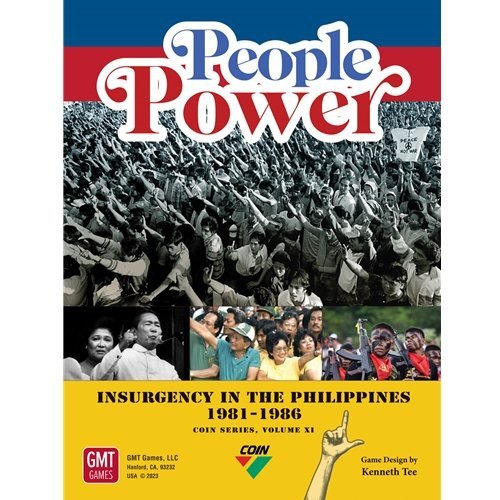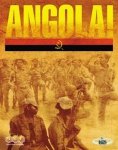-
Załączniki bezpieczeństwa
Załczniki do produktuZałączniki dotyczące bezpieczeństwa produktu zawierają informacje o opakowaniu produktu i mogą dostarczać kluczowych informacji dotyczących bezpieczeństwa konkretnego produktu
-
Informacje o producencie
Informacje o producencieInformacje dotyczące produktu obejmują adres i powiązane dane producenta produktu.GMT Games
-
Osoba odpowiedzialna w UE
Osoba odpowiedzialna w UEPodmiot gospodarczy z siedzibą w UE zapewniający zgodność produktu z wymaganymi przepisami.
This episode would embolden and mobilize the opposition to the Marcos regime and set in motion a chain of events that would conclude with the departure of Ferdinand and Imelda Marcos some three years later, after more than twenty years of autocratic rule. This is a story of greed and corruption at the highest levels of government, of a dictator who ruled with an iron fist, and of a grass-roots opposition that stood up to him, revolted, and eventually drove him from power in disgrace. It was a revolution that displayed that there is great power in a united, determined group of individuals. Just a few short years before the Iron Curtain fell in Germany, Filipino patriots showed the world the power of a people united to topple a tyrant. At its heart, it is the story of "People Power."
People Power: Insurgency in the Philippines, 1983-1986 is volume XI of the highly-praised and popular COIN Series originally designed by Volko Ruhnke. People Power features three separate factions, instead of the customary four.
- The first faction is the Government, symbolized by the personal rule of Ferdinand Marcos, his wife Imelda, and his political cronies and military forces.
- Second are the NPA. Inspired by successful Marxist revolutions in China, Cuba and Nicaragua, these insurgents sought a national uprising from both the urban and rural populace and desired to replace the Marcos government with their own brand of autonomy.
- The third and final faction is the non-violent Reformers, embodied by Aquino’s widow, Corazon. She, along with her allies and supporters in that moment of tragedy, revived a platform of social justice and unrelenting momentum that would irrevocably change the Philippine political landscape immeasurably.
For players new to the COIN Series, or for those looking to teach the the series to their friends, People Power will serve as an excellent introductory game. Aiming for a 2 hour playtime and accessible complexity, People Power utilizes many of the basic COIN Series mechanics in new and familiar ways. The 22" x 17" map aids in introducing the game to a new player, as it presents only two types of terrain - Cities and Countrysides (where the latter amalgamates the rural settings of the island nation as well as much lightly-habitable terrain of jungles and mountains). Don't let the fast play and basic systems fool you, though. There are still plenty of strategic puzzles and inter-player backstabbing to be had! Also, People Power includes a new feature for the COIN Series - a Key Personality mini-hand procedure that represents the effectiveness of various generals and power brokers adding a new dimension to player actions and decisions.
- NPA Victory comes in the form of amassing NPA Bases, and instead of Support or Opposition, NPA "Resistance". Their Operations and Special Activities are not only indicative of most Cold War era revolutionary movements but also distinct in its application to its domestic agendas.
- The Government uses Support and Control to funnel patronage to cronies and the Marcos' family. Their Operations and Special Activities allow them to operate against the NPA (as in previous COIN volumes) and to subvert the activities and thwart the plans of the non-violent Reformers, as well.
- The Reformers (the historical victors) win by having both Reformer Bases and Opposition. Their Operations and Special Activities tools are not as powerful or intimidating as their armed foes but are crafted to provide them with persuasive social impact in a war of ideas.
- People Power is one of the lower complexity COIN games with a much shorter play time, which can be utilized as a primer for those who wish to learn the system as a gateway to the other more complex games in the series.
- Propaganda Turns have been replaced by a two-turn Election cycle.
- The Personality Cards are representations of political, military and cultural figures; the “Newsmakers” of their time. Each card grants a different 'momentum' effect for each campaign.
- The Acts of Defiance deck serves to model the chaotic final three days of the People Power Revolution by giving players secret objectives that are scored during the final victory check.
Game Components:
- 17x22 inch mounted mapboard
- One Event Deck
- Card-Driven Solo-System Deck
- 79 Wooden Pieces
- 12 pawns
- One full-size, full-color counter sheet
- Rules of Play booklet
- Playbook booklet
- Three 6-sided dice
- Three foldout play aid sheets
Game Features:
- Number of Players: 1 – 3 (includes full solitaire system)
- Time scale: 6 to 9 months per campaign of 10 cards
Designer: Kenneth Tee
Developer: Eric Harvey
Series Creator: Volko Ruhnke









